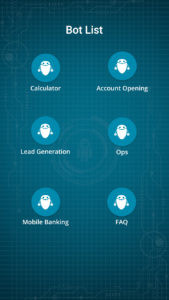ENHANCED CUSTOMER EXPERIENCE WITH CONVERSATIONAL UX CHATBOTS
A recent analyst report from Juniper Research found that by 2022, chatbots and NLP will save companies about $8 billion per year in customer supporting costs, which is a far cry from the $20 million in estimated savings for 2017. And by 2022, 20% of customer service will be handled by conversational agents as reported in a recent Gartner analyst report.
The use of AI technologies such as machine learning, natural-language understanding (NLU) and natural-language processing (NLP) can help analyze customer sentiment and customer feedback at scale, precision and speed not achievable through humans. And, as a few examples, areas where AI can help include:
Sales: AI tools offer white-space analysis for sales and can recommend immediate action on opportunities. They can also prioritize leads most likely to be converted and closed, offer account insights, generate forecasts and provide explanations.
Marketing: There are AI-powered solutions that allow marketing to generate highly personalized messages at scale that could not have been achieved using humans alone.
Customer service: The use of virtual customer assistants (VCAs) can help improve the customer experience as it reduces time to response and allows users to interact with your company through a text and/or voice conversational agent 24/365.

ANALYZE & AUTOMATE CUSTOMER BEHAVIOR DATA: MANUAL ANALYSIS VS. NLP
Organizations have two kinds of customer feedback data that they measure, store and analyze: quantitative and qualitative data. Quantitative data is information that is clearly defined and easy to report on. It is the kind of data that is generally found in a survey and can be organized in a spreadsheet. Some examples are Transactional Information (Online and Offline), Communication Information (Inbound and Outbound), Online Actvity, Social Network Activity, Customer Services Information.
Qualitative data as it exists today is basically description of your customer and potential behavior, although it can include other media, such as audio, photos or video. This type of data can be captured in an email, the “additional comments” section of a survey; voice recordings of customer interactions; a post on a customer review site; in social media, call center notes and chat transcripts; and from other interactions.
Reading through large quantities of unstructured qualitative text data is time-consuming and next to impossible for large organizations or organisations dealing with large sets of customer data sets. Assuming that the average person can process 50 items of unstructured data an hour, it would take nearly seven years for one person to read through one million text items at a cost of around $145,000. No wonder that providers dealing with complex unstructred post call survey data each month utilize cognitive abilities of AI powered tools to do the work for them.
ANALYZING (REAL)-TIME CONVERSATIONS
Sales reps and customer service reps hold hundreds, or even thousands depending on the size of the company, of conversations every day. AI can help sift through these conversation postcalls, but perhaps even more interestingly, it can transcribe and analyze conversations in real time. Imagine this in a sales environment  saving sales reps the time to write up the conversation postmeeting, analyzing what was discussed during the meeting and offering recommendations on actions.
Solutions such as this can also be used for sales training purposes; currently, senior sales management spends a considerable amount of time training new sales reps. Using a solution such as this could speed up training and save senior management time. More importantly, the AI intelligence gleaned from hundreds of sales conversations will speed understanding of what works in sales situations and what doesn’t, thus potentially improving the sales experience and sales potential.

AI-enabled customer experience journey can ultimately help streamline and effectuate following day-to-day operations:
Customer service:
The virtual agent acts as the first line of defense and only more complex inquiries can be escalated to human agents. Even if a call is escalated to a human agent, the bot “stands by†on the call for:
– Continuity and conversation wrap up and documentation
– In case there are human/machine learning opportunities
– If simple tasks like payment card or contact information changes need to be completed
Sales:
– Mines customer data and surface hidden insights.
– Captures data, improves data quality.
– Analyzes conversations and spots win-win situations.
Looking for more insights on how InfrasoftTech Chatbots Solution can help you reduce costs while providing better customer experiences? Write to us at marketing@infrasofttech.com
